Supporting armored monsters. CH 1. British cavalry in the third year of world war
One of the fundamental questions - what was the role of the British cavalry in the Amiensk operation 8 - 13 in August 1918? The work of both Soviet and foreign military experts of 20-30 was of key importance to us. XX century - including participants in the hostilities of the First World War. In relation to the Amiens operation, we primarily mean the work of Captain De La Bushehr.
But before considering this question, let's see - what did the British cavalry to the 2-th half of the First World War? An official brochure will help us to answer this question, based on the materials of Colonel of the 13 Vladimir Regiment of the Lancers Prince A. Chavchavadze - based on the results of his trip to the Western Front in the autumn of 1916
1. From the author's library.
A. Chavchavadze in his report provides exhaustive information about the state of the British cavalry on the Western front - not referring to cavalry units fighting in Mesopotamia, Egypt and other fronts.
In the English sector of the Western (French) Front, the 46 British cavalry regiments concentrated in the corps were concentrated (S. 5.). Depending on the contingent of the regiments were divided into regular, territorial, Indian and Canadian. The corps included 5 cavalry divisions 3-brigade each in its composition (brigades also - on the 3 regiment). The only exception was the 1-I Indian Cavalry Division, one of the brigades of which had an 4 regiment: Indian 3 and regular 1. All regiments except the Indian - 3-squadron (Indian - 4-squadron).
2. Cavalry 2 th Dragoon Regiment. 1914 La Cavalerie Britannique dans la Premiere Guerre Mondiale. 2007.
1-3-I cavalry divisions included both regular and territorial cavalry regiments, and 1-I and 2-I Indian cavalry divisions included the regiments of Indian cavalry and regular shelves (and 2-I Indian cavalry division, moreover, and three existing in the corps of the Canadian regiment, consolidated into a brigade, bearing the name Canadian). Indian cavalry brigades consisted of two Indian and one regular regiments (as noted above, one Indian brigade of the 1 Indian Cavalry Division had an 4 regiment).
The 46 cavalry regiments were divided into divisions as follows (C.6):
1 Cavalry Division - 8 regular and 1 territorial regiments;
2 Cavalry Division - 8 regular and 1 territorial regiments;
3 Cavalry Division - regular 6 (of which 3 Guards) and 3 territorial regiment;
1-I Indian Cavalry Division - 3 regular and 7 Indian regiments;
The 2 I Indian Cavalry Division - 2 Regular, 4 Indian and 3 Canadian Regiments.
Thus, in the cavalry corps there were 149 squadrons, combined in 15 brigades and 5 divisions. The combat composition of the regiment was standard - 480 riders (excluding auxiliary teams) - Indian squadrons had 120, and the rest had 160 people. The squadron was divided into four platoons, and a platoon into four squadrons. All the shelves, not excluding the Indian, were divided into Uhlan, Hussar and Dragoon. They did not differ in the form of clothes, weapons or equipment.
3. Niva. 1915. No. 8.
Kavkorpus - strategic cavalry. But besides his 46 regiments there were other cavalry units - military cavalry. So, each of the 18 army corps on the English front in France was given one territorial cavalry of the 3 squadron as corps cavalry.
Each cavalry brigade consisted of one equestrian battery 6-gun composition, 12 machine guns of the Vickers system in a machine-gun squadron, and a communication command. Each of the 5 divisions was assigned to a sapper squadron, a communications team, a 4 machine-gun armored vehicle and a 1 mobile 2-inch gun moved by an armored car.
The squadron consisted of 6 officers (komesk, deputy commander and 4 junior officer) and 20-25 non-commissioned officers. A. Chavchavadze noted that “The organization of a non-commissioned officer frame is very similar to ours, with the difference that the platoon non-commissioned officers are supposed to have two per platoon, of which the senior officer is the head of the platoon, and the younger is his deputy” (S. 8).
4. Niva. 1915. No. 8.
He also noted such an interesting fact that in the English army the ranks are assigned depending on the position held - and, in the case of appointment to a certain position, the person is immediately assigned the corresponding rank - no matter what rank it was before the appointment. When a person left the position, he returned to his former rank - unless, of course, during his tenure in the highest position, the person was promoted to a higher rank.
In the regiments of the Indian cavalry the positions of platoon commanders were replaced mostly by Indians. But positions, starting with the squadron commander and above, could not be replaced by Indian officers - and the tradition was such that the youngest of the British officers was considered older than the highest officer of the rank of the Indian officer.
5. Niva. 1916. No. 46.
The armament complex of the British cavalry were.
Gunshot weapon - Lee-Enfield rifle with a bayonet-knife (firing range 4200 steps); The 6-charging revolver of the Smith and Wesson system (armed officers, trumpeters and other ranks who are not supposed to have rifles).
Cold steel - a broadsword (Indian regiments instead of a broadsword were armed with a sword with a wide hilt; the blade of the sword, as the expert noted, was somewhat shorter than the Russian, and also wider and more curved) and peak. The broadsword in a metal, leather-covered sheath with a narrow, but rather heavy, pointed blade was extremely inconvenient for chopping - and it was used solely for delivering piercing blows. The broadsword of the broadsword was equipped with a wide hilt. Only Uhlan and some Indian regiments are armed. According to the calculations, only a third of the regiments of the English cavalry were armed with spikes (A. Chavchavadze noted that this was not enough). Peak - bamboo, with a sharp, thin, spindly steel tip. The tip had three pointed edges with longitudinal grooves. The other end of the peak was equipped with a blunt, Russian-like metal tip. At the base of the upper tip there was a leather circle about three inches in diameter and about one centimeter thick — it served so that the peak, when striking a blow, did not penetrate too deep into the body and could be easily pulled out. The length of the English peak is approximately equal to the length of the Russian - but the first one is much lighter and stronger. The English peak, the colonel noted, is very comfortable in his hand.
6. 16 th Uhlan regiment 3 th cavalry brigade in France.
7. Peaks in battle. Battle of Mons, September 7 1914. La Cavalerie Britannique.
In addition to individual weapons, one Hotchkiss light machine gun (later on 2) was put on each cavalry regiment. Hotchkiss moved on a pack horse, and the shooting was done mainly lying down - resting the end of the trunk on a small folding tripod. The cartridges were inserted into a special metal tape - on 37 cartridges. Hotchkiss is a very fast-firing weapon, in the blink of an eye devouring a ribbon — and due to the rapid heating of the barrel, the last, after every 500 - 600 shots, had to be replaced with a spare one.
8. The machine gunner is a corporal of the 17 of the Uhlan regiment of the 3 of the cavalry division. France, 1918 La Cavalerie Britannique.
Uniform of the English army - protective khaki. A marching uniform with four large pockets, English-style short leggings, overcoat, cap, wide leather belt, lace-up black boots are the main outfit of the English cavalry. The officers mostly wore leggings or lace-up high boots or boots with lacing on the rise. Officer's shoes - from yellow skin. The uniform of the officer’s marching uniform differed from the uniform of the lower ranks only in that the collar was cut as in a civilian jacket — that is, the chest and neck are open. Under a marching uniform - a shirt of a protective color with the same color of a tie. Indians instead of marching uniform wore shirts - knee-length, with two large pockets on the chest, and instead of a cap - khaki turban. All the ranks of the cavalry wore epaulets - from the same material as the marching uniform, without numbers and ciphers. Only the regiments of the Canadian cavalry had an inscription on the lower edge of the epaulet with copper letters “Canada”. To distinguish one part from another, many regiments and headquarters had their own symbols — for example, the image of a horseshoe, arrows, etc., mostly sewn on the sleeve or on the back. The same sign was placed in hand-painted emblem on cars, gigs, rulers, and other vehicles belonging to the respective regiment or headquarters. As A. Chavchavadze noted, thanks to this sign, there was no need to affix letters or numbers on shoulder straps or cargo ships - but, on the other hand, this made it easier for spies to gather the necessary information (C.13.).
9. Niva 1916. No. 39.
Officer ranks in the English army differed by the signs of differences on shoulder straps or cuffs sleeves.
Horse rider equipment included: a saddle with one broad leather cinch; A leather troc was fastened on top of the saddle, which was already somewhat of a cinch and served both for fastening the saddle on the horse’s back and for strengthening the blankets - when the horse was saddled and covered with a blanket. Instead, they put two warm blankets four times under the saddle — one designed to cover the horse, and the other served as a blanket for the rider.
The sailcloth, as in the Russian cavalry, the sacwa with oats was stranded behind the rear bow of the saddle. The folded overcoat was strapped with straps to the front holsters - on top of the latter. On the left, he hung on two belts and was attached to his third girth leather flat semicircular case with a pair of spare horseshoes with nails. On this case was attached a wide leather nut into which a broadsword slipped.
In some Indian shelves, the sword was worn out much more practical: it was attached to the front and left of the saddle, and its end was pulled by a belt to the left stirrup. The checker was conveniently and quickly removed from the scabbard and did not dangle during movement. Behind the right wing of the saddle there was a leather case in which the rifle was placed. The lower end of the boot was provided with a strap that connects to the cinch. But this way of carrying a rifle is extremely inconvenient. In addition to the gravity of the rifle, the weight of the leather case was added - representing a load that dangled when the horse was moving. And when the rider fell from his horse, the latter was left without a rifle. A. Chavchavadze noted that it is more expedient to carry a rifle on the rider himself - as is customary in the Russian army.
Bushmat was at the right stirrup - in parts where it is supposed to have peaks.
The headband consisted of a wide leather halter with a headrest and a leather or rope chumbur. A simple headband with one cheek strap without shoulder band and noses was put on the halter: it was fastened from both sides, at the height of the horse's eye - with a belt to the halter. In some shelves of Indian cavalry, a munshtuchnoe was caught up to the halter — which was very simple and practical. Udilo in the English cavalry - only munstuchnoe.
10. Niva. 1916. No. 43.
The rider wore on himself: a bayonet in a leather case attached from the right side to the waist belt (on top of the latter there were 2 leather loops for inserting the handle of the tailing instrument - a small pickaxe in the canvas case), 90 cartridges (the horse had the same plus 10 cartridges in a rifle magazine; cartridges worn on the rider and on a horse were placed in two cartridge belts, which were a wide belt with 9 leather nests sewn onto it — each of them contained two clips of 5 cartridges each; about The rider from the cartridge belts wore over himself over his left shoulder, and another similar cartridge belt was thrown over the horse's neck like a yoke, but the cartridge belts can be worn as a belt).
Gas mask (gas mask) - always on the rider, and worn over his shoulder. The lower end of the mask reached the middle of the chest.
11. A cavalryman of the 17 Uhlan regiment of the 3 Cavalry Division. France, 1918. La Cavalerie Britannique.
Metal helmets were always with the cavalryman. In most cases, they were fastened with straps — on the side behind the wing of the saddle or worn directly on the rider’s shoulder, pulling up the helmet with the chin strap passing under the arm.
In addition to these things, each rider had a water flask, a frying pan and a canvas bag. In a saddle set, a tent was carried on a 2 man and a collision ship.
The horse staff of the English cavalry was beautiful: the horses were tall and well boned. Most of the half-blooded, but met and purebred - Anglo-Arabs and purebred Arabs. In addition to horses born in Great Britain and Ireland, there were many Australian and other horses.
To replenish the loss of people and horses in the regular cavalry and territorial regiments served as spare shelves. Each spare 3 squadron regiment served two operating regiments. In the spare shelves of the horse went, and the riders received the initial combat training. To replenish the combat strength of the Indian regiments there were special depots located in Marseilles. In some cities of France there were also depot for replenishing the regiments of the regular and territorial English cavalry - in terms of 40 man and horses for each cavalry regiment. The depot data were the nearest reserves for cavalry replenishment. Each cavalry regiment had a reserve in 100 people - but horseless. They were in the wagon train of the 1 class and were used for various jobs.
With each division there were special schools - in which they taught both the specifics of cavalry combat and small-arms, machine-gun and grenadier affairs.
The means of communication used in the English cavalry, consistent with Russian practice. These included: telegraph, telephone, wireless telegraph, cars, motorcycles, bicycles, homing pigeons, horse and footmen, signal flares and lamps, heliographs, electric lamps for signaling and flags. The latter, in contrast to the Russian cavalry, were in the hands of the British at large (C.22).
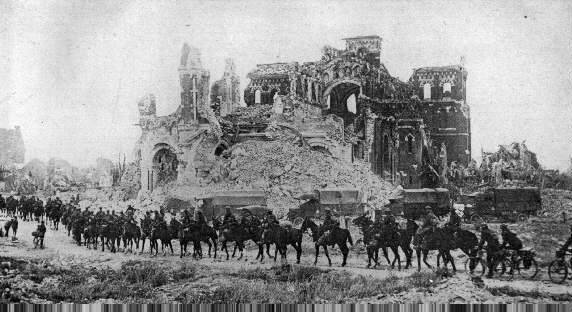
12. British cavalry enters Peronne.
A. Chavchavadze noted that, due to the recent absence of episodes of pure cavalry work on the English front, the British cavalry, naturally, could not work out any new tactics - and with regard to the methods of using cavalry in combat, as well as in the sense of fighting spirit Russian cavalry can serve as an example for the English. Observing the maneuvers of the British cavalry, the specialist pointed out the mistakes of cavalry use by cavalry commanders. But he noted and useful stories in the field of equipment and weapons of the British cavalry. The colonel wrote that the British cavalry "thanks to the created positional war, naturally, could not have a wide field of action. Reluctantly, she is waiting for a brighter future, firmly confident that the cavalry will end the war. ”
The modern and numerous British cavalry on the scale of the whole corps made it possible to count on the development of success of the allies of any level — with a large-scale breakthrough of the enemy’s positional front, when hostilities again became maneuverable.
Have these aspirations come true?
The answer to this question is in the next articles of the cycle.
Продолжение следует ...
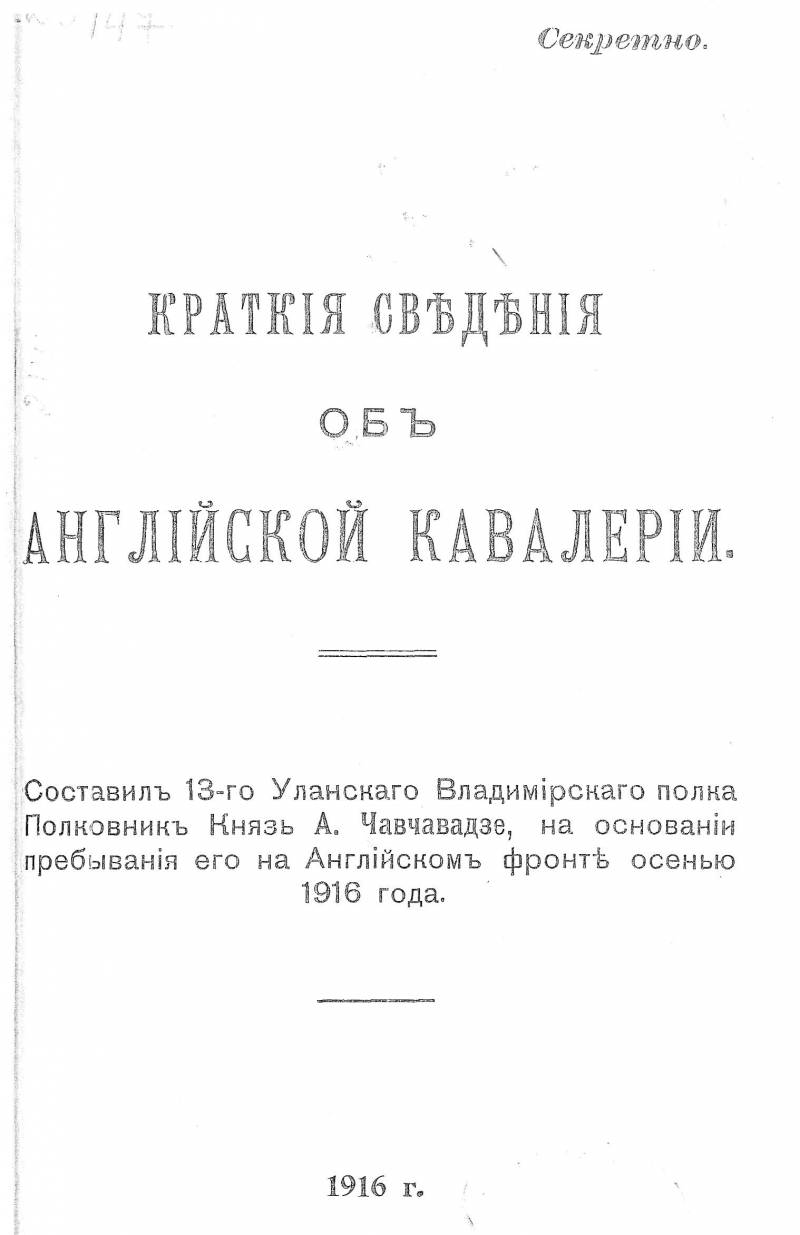
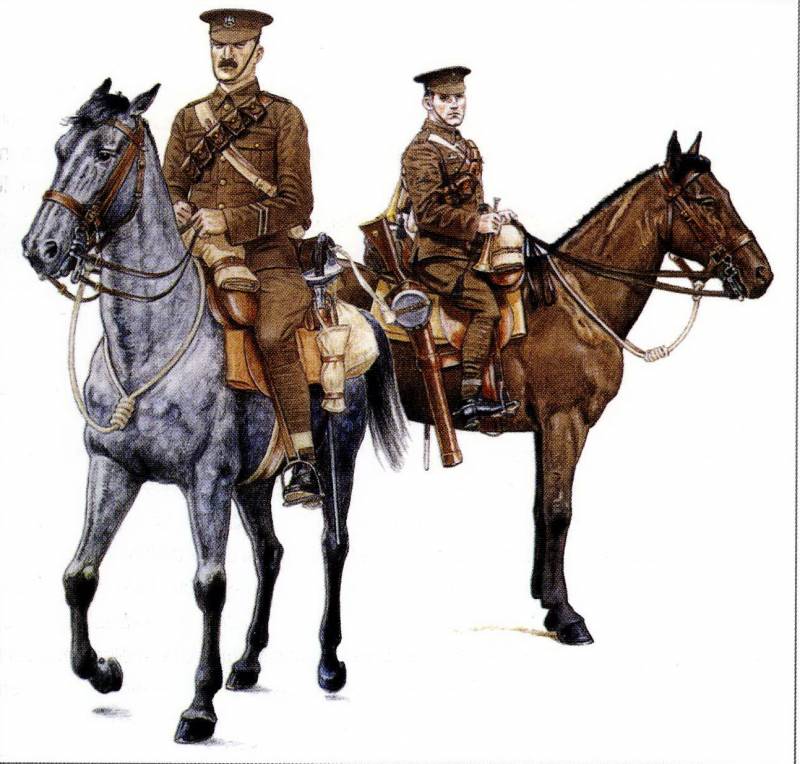
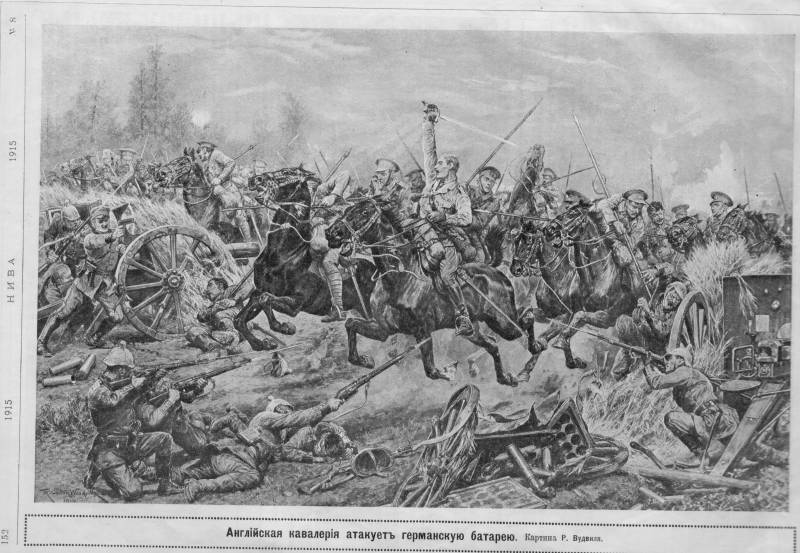
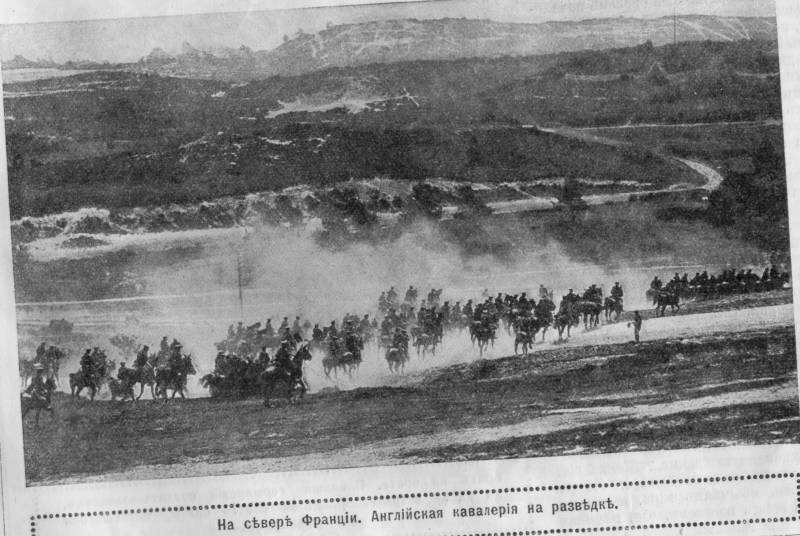
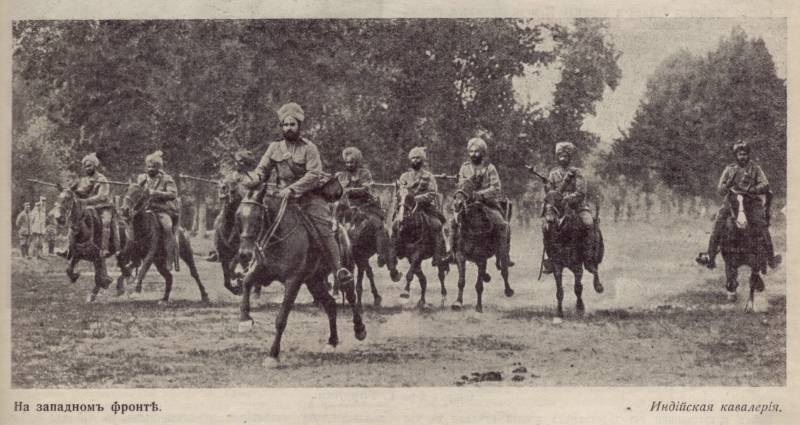
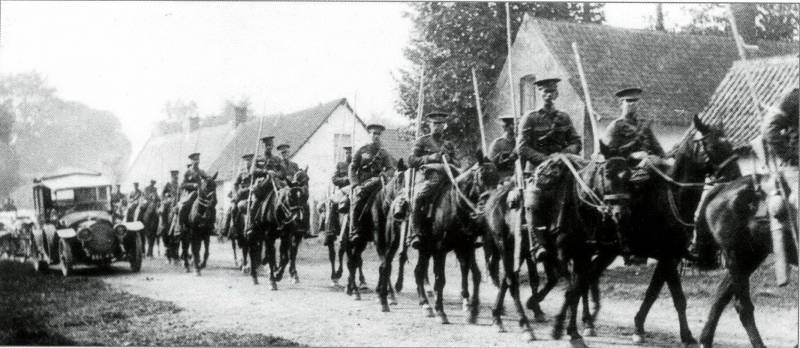
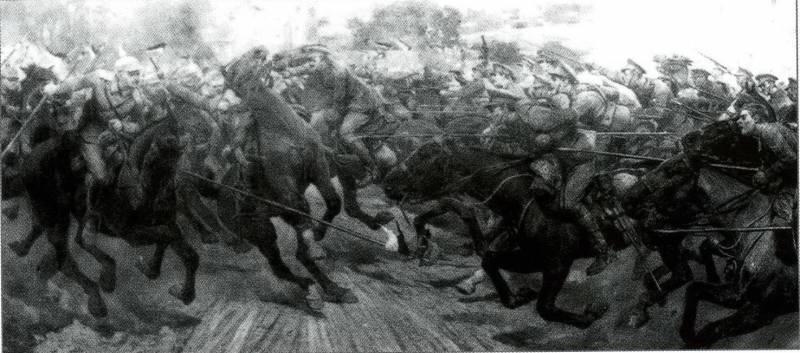
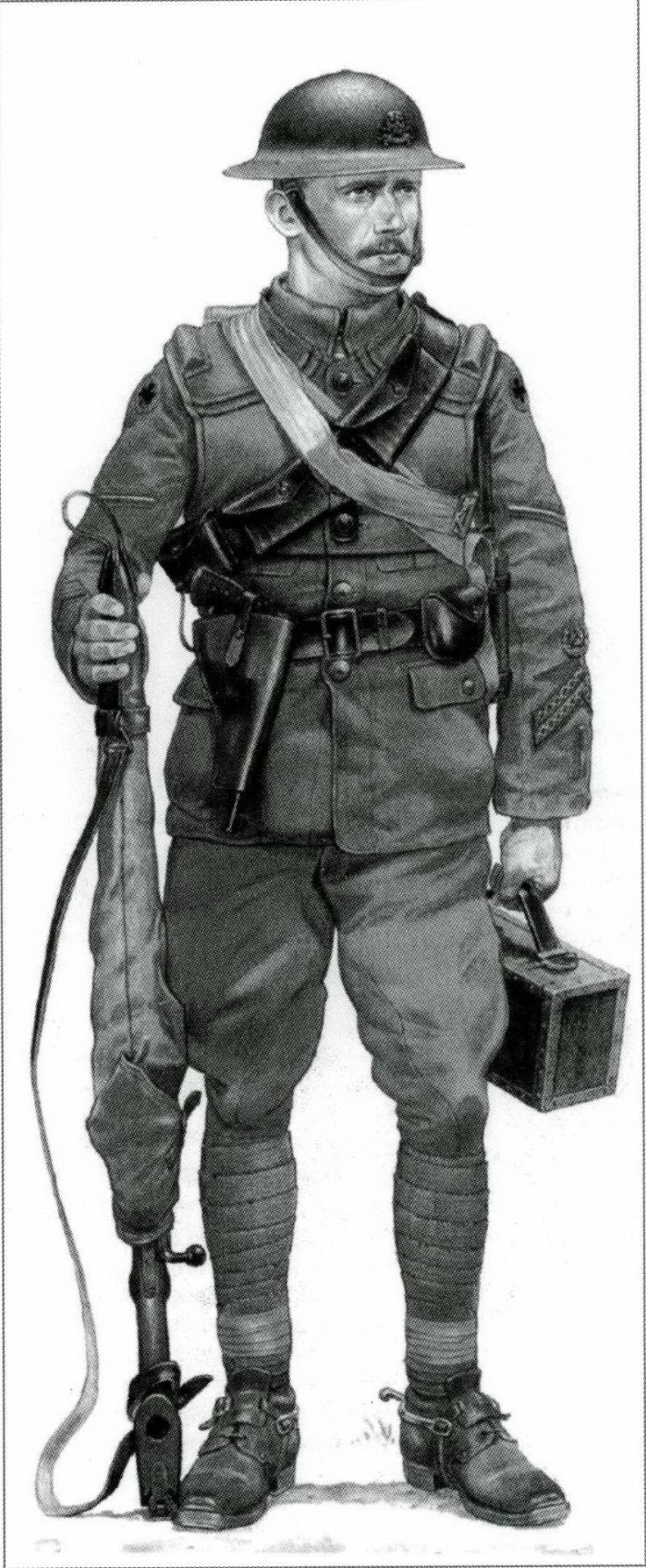
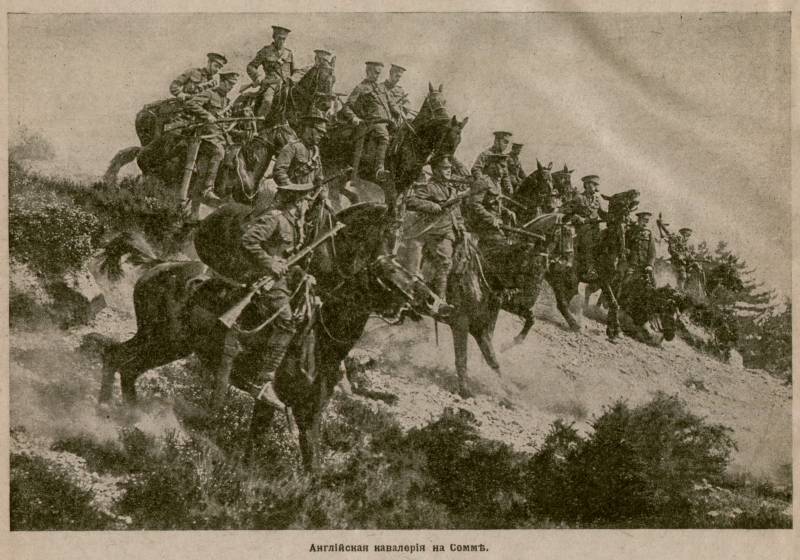
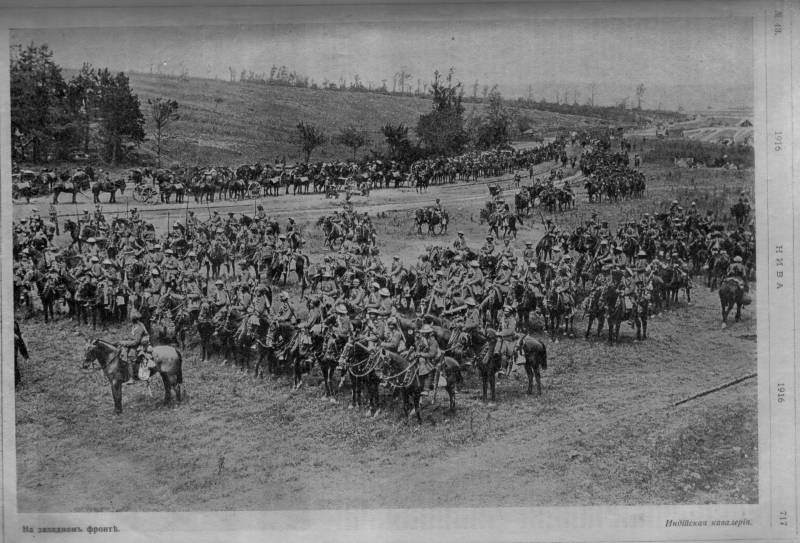
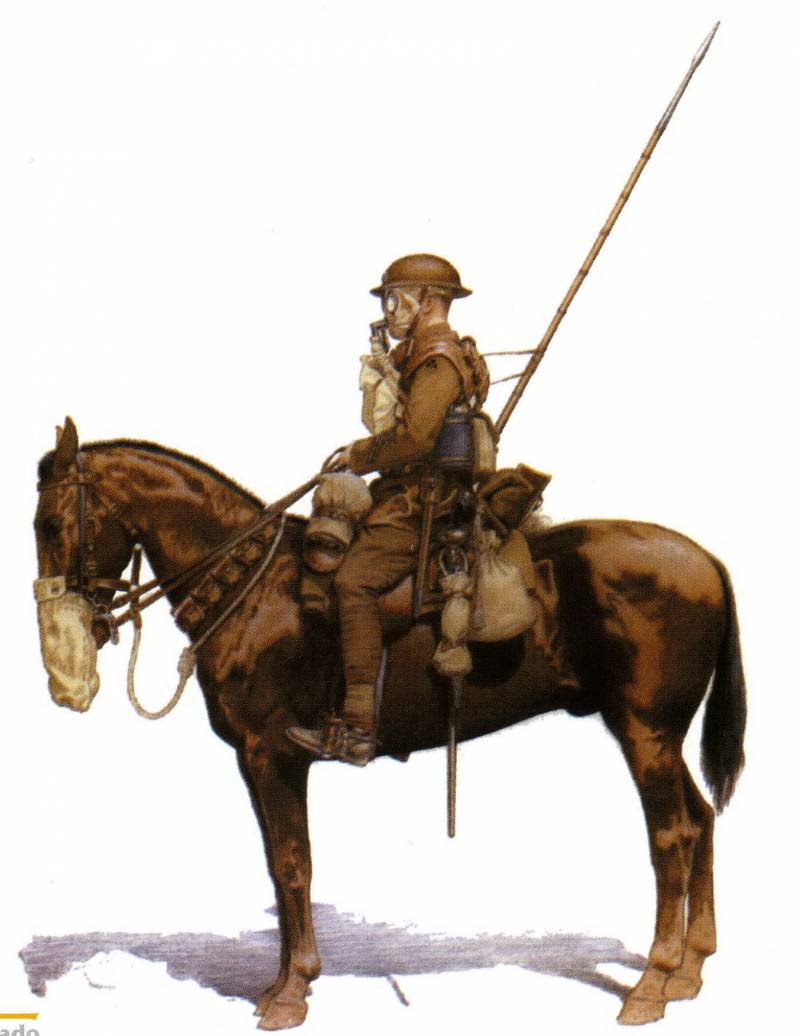
Information